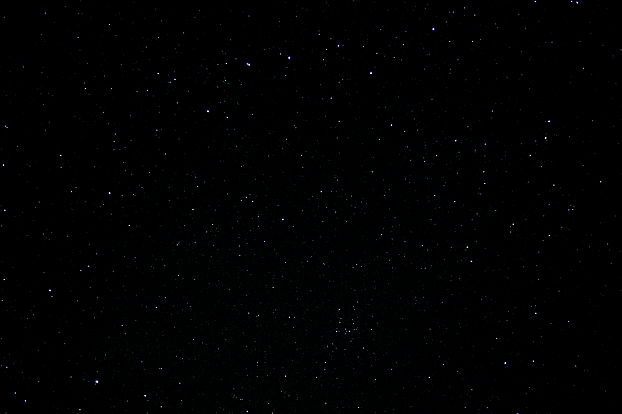


This is not one of Plato's original constellations as he included its stars in Ursa Major. It was invented by Helvelius in the 17th century as a result, it seems, of a mistranslation back in the 9th century. Traditionally Boötes was depicted with a club, but when Plato's Greek text was translated into Arabic, the translator, Johannitius, did not know the Greek word and rendered it with a similar-sounding Arabic word. When the Arabic was translated to Latin in the 12th century, the translator, Gerard of Cremola, misread the word as a similar-looking Arabic word meaning "dogs". So in 1533 the German astronomer, Peter Apian, depicted Boötes as having two dogs with him. Finally Helvelius created a constellation, Canes Venatici, for these two dogs, calling them Asterion, meaning "little star" and Chara, meaning "joy".
Although not a large constellation, Canes Venatici is larger than it appears to be on many star maps which join only the three stars β, α, and 20. It has no stars brighter than magnitude 2.9. The brightest stars in the area are Alkaid and Mizar which are the end two stars of the tail of Ursa Major and help to identify Canes Venatici. The brightest star, α, was named Cor Caroli by Sir Charles Scarborough in honour of King Charles I (who lost his head in the English civil war) after the restoration of King Charles II. It is a double star, of which the primary (α2) is an unusual star having a strong magnetic field and an over-abundance of certain elements such as Silicon and Mercury. It is slightly variable (2.84 to 2.98) with a period of 5.47 days. This is thought to be caused by enormous sunspots on its surface caused by the strong magnetic field. The secondary (α1) is a normal star of magnitude 5.6.
The brightest star, α, was named Cor Caroli by Sir Charles Scarborough in honour of King Charles I (who lost his head in the English civil war) after the restoration of King Charles II. It is a double star, of which the primary (α2) is an unusual star having a strong magnetic field and an over-abundance of certain elements such as Silicon and Mercury. It is slightly variable (2.84 to 2.98) with a period of 5.47 days. This is thought to be caused by enormous sunspots on its surface caused by the strong magnetic field. The secondary (α1) is a normal star of magnitude 5.6.
There are five Messier objects: M3, a globular cluster, M51 a face-on spiral galaxy, M63 and M94 both spiral galaxies, and M106 a Seyfert galaxy.
The main picture above was taken at 00:25 UT on 8 April 2011 with my Cannon 1000D and is a single, 30-second exposure at f/4, ISO 1600 and a focal length of 18 mm. Background sky-glow was removed in PhotoImpact and the size reduced in two steps with a slight unsharp mask to compensate for losses caused by the reduction.
The picture of Cor Caroli was taken at prime focus of my LX200 and a DFK 21AF04 camera. I collected 1314 frames at 30 fps and 1/45 second exposure The 249 best frames were stacked in RegiStax and the histogram stretched 50-255. The primary is spectral type A0 which is on the blue end of white, and the secondary is type F which is yellow-white. So the primary is slightly more blue than the secondary, but this is not easy to see.